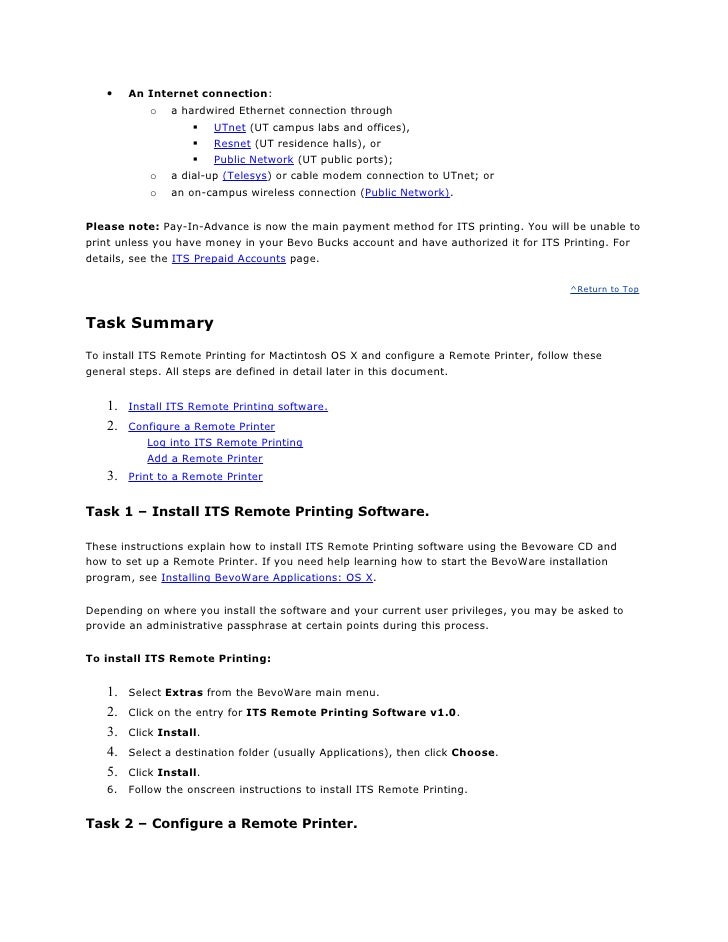

- #Top 5 programs you have to learn for mac os x how to#
- #Top 5 programs you have to learn for mac os x install#
- #Top 5 programs you have to learn for mac os x download#
- #Top 5 programs you have to learn for mac os x windows#
You’ll find yourself using a lot of keyboard shortcuts on Mac. #Top 5 programs you have to learn for mac os x windows#
For example, if you’re used to pressing “Control + I” on a Windows machine to italicize text, it’s now “Command + I” on Mac.
Forget the Control Key the Command key is your new best friend. Command is the new Control when using a Mac. #Top 5 programs you have to learn for mac os x how to#
How to use keyboard shortcuts and gesture controls
#Top 5 programs you have to learn for mac os x download#
You can also download third-party Mac apps like Appcleaner (free) to delete previously installed programs on your computer. Drag the icon of the app you want to delete to the Trash icon on the dock.
How to delete Mac apps: To delete Mac apps, open Finder and go to the Applications folder. If all else fails, you can always hit “Command + Q.” Alternatively, you can right-click an app icon on the dock and click Force Quit. In order to properly exit a Mac app, click the app name at the menu bar on top, then find “Quit” on the drop-down menu. How to quit Mac apps: Clicking the teeny “x” button on the top right-hand corner of an application won’t truly close the app. You can download apps from the Mac App Store (similar to the iOS App Store, except it sells OS X apps), or anywhere on the Internet. By doing so, you’re making the app available on the apps homescreen accessible via Launchpad. #Top 5 programs you have to learn for mac os x install#
How to install Mac apps: When installing a Mac app, you’ll be prompted to drag the app’s icon into the Applications folder.Spotlight is a text search bar that’ll help you find files and even word definitions via OS X’s built-in dictionary. Spotlight: You’ll find the Spotlight window situated next to the time on the thin menu bar on top of your screen (look for the little magnifying glass).It’s where you can access all your files. Finder: Think of finder as Mac’s My Documents’ folder.It’s called the Dashboard, and you can pin various widgets on it, including currency and measurement converters, virtual Post-it notes, clocks, and more. Dashboard: When you access Mission Control, you’ll notice that the screen at the very left is not another desktop.Launchpad: Want to see all your Mac applications and not just those displayed on your dock? Find the silver icon with the rocket graphic to launch your app screens.We’ll discuss OS X touch gestures in more detail later on. To access a desktop, you can either go back to Mission Control and select one, swipe upwards with three fingers on your trackpad, or double-tap with two fingers using a Magic Mouse. Yes, you can add and subtract as many desktops as you want – something that’s especially useful for MacBooks with smaller screens. Mission Control gives you an overall view of all the windows and desktops you have open.
 Mission Control: One of the default dock icons is Mission Control. At the top left-corner of the menu bar is the Apple icon where you can find the Log Out and Shut Down commands. Here, you can find small icons of programs that work in the background (cloud services like Dropbox and Google Drive, among others). The menu bar is at the top of the screen. You can customize your dock to display oft-accessed programs. Dock and menu bar: You can use the dock at the bottom to launch apps or go back to an open app if you’ve temporarily navigated to another homescreen. You can write a reminder on your computer and access it on your iPad or iPhone if you happen to have either.Ī handful of the OS X features you need to know to get started are: Some applications, like Reminders and Notifications, are tightly connected to the cloud. That said, there are many OS X-exclusive features and applications that you won’t find on a Windows machine. Nothing’s so shockingly different that you’d feel as if you’re navigating something that’s not a computer. OS X isn’t a complete departure from Windows. The newest release to date, version 10.8, is called Mountain Lion. Think Leopards, Lions, and, according to rumors, even Lynxes. Mac computers come with Apple’s own operating system (OS) called OS X, with versions named after big cats. You certainly can if you want to, but you don’t have to. Macs come with OS Xįirst things first: You don’t need to install Windows on a Mac computer. You don’t have to learn everything from scratch, but Apple’s OS X is different enough that you might just find this guide useful. Mac newbies will find that the homescreen appears foreign, the trackpad will do confusing things, and there will likely be a plethora of helpful tricks that you’ll never unearth. Now that we know Apple’s new iMac will be available starting Friday, November 30, it’s time to prepare yourself – especially if this is your first time using a Mac.
Mission Control: One of the default dock icons is Mission Control. At the top left-corner of the menu bar is the Apple icon where you can find the Log Out and Shut Down commands. Here, you can find small icons of programs that work in the background (cloud services like Dropbox and Google Drive, among others). The menu bar is at the top of the screen. You can customize your dock to display oft-accessed programs. Dock and menu bar: You can use the dock at the bottom to launch apps or go back to an open app if you’ve temporarily navigated to another homescreen. You can write a reminder on your computer and access it on your iPad or iPhone if you happen to have either.Ī handful of the OS X features you need to know to get started are: Some applications, like Reminders and Notifications, are tightly connected to the cloud. That said, there are many OS X-exclusive features and applications that you won’t find on a Windows machine. Nothing’s so shockingly different that you’d feel as if you’re navigating something that’s not a computer. OS X isn’t a complete departure from Windows. The newest release to date, version 10.8, is called Mountain Lion. Think Leopards, Lions, and, according to rumors, even Lynxes. Mac computers come with Apple’s own operating system (OS) called OS X, with versions named after big cats. You certainly can if you want to, but you don’t have to. Macs come with OS Xįirst things first: You don’t need to install Windows on a Mac computer. You don’t have to learn everything from scratch, but Apple’s OS X is different enough that you might just find this guide useful. Mac newbies will find that the homescreen appears foreign, the trackpad will do confusing things, and there will likely be a plethora of helpful tricks that you’ll never unearth. Now that we know Apple’s new iMac will be available starting Friday, November 30, it’s time to prepare yourself – especially if this is your first time using a Mac.






 0 kommentar(er)
0 kommentar(er)
